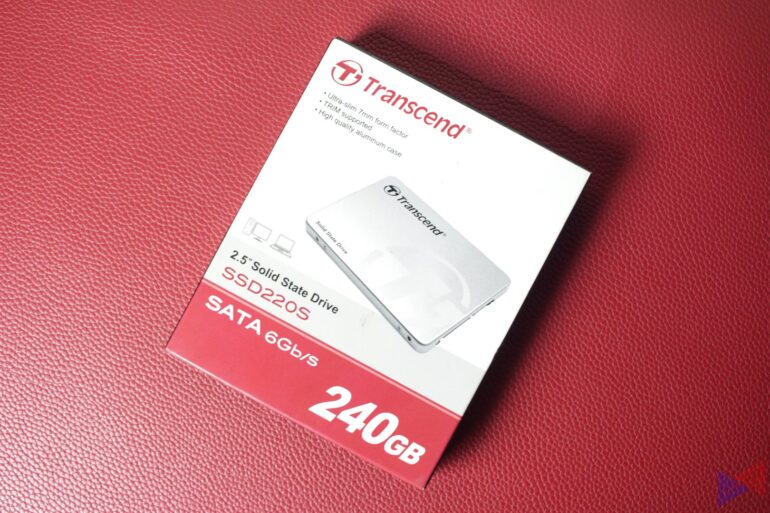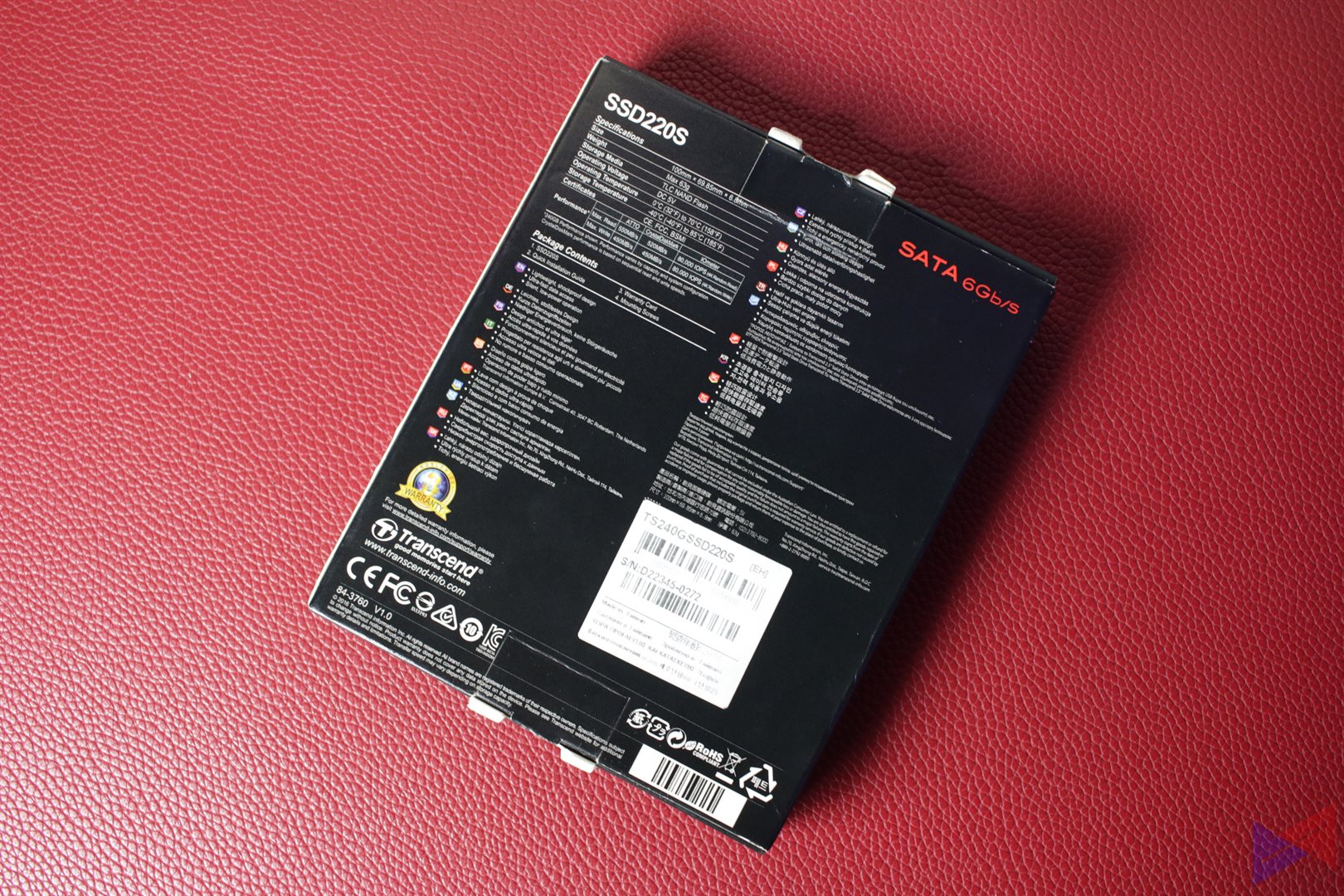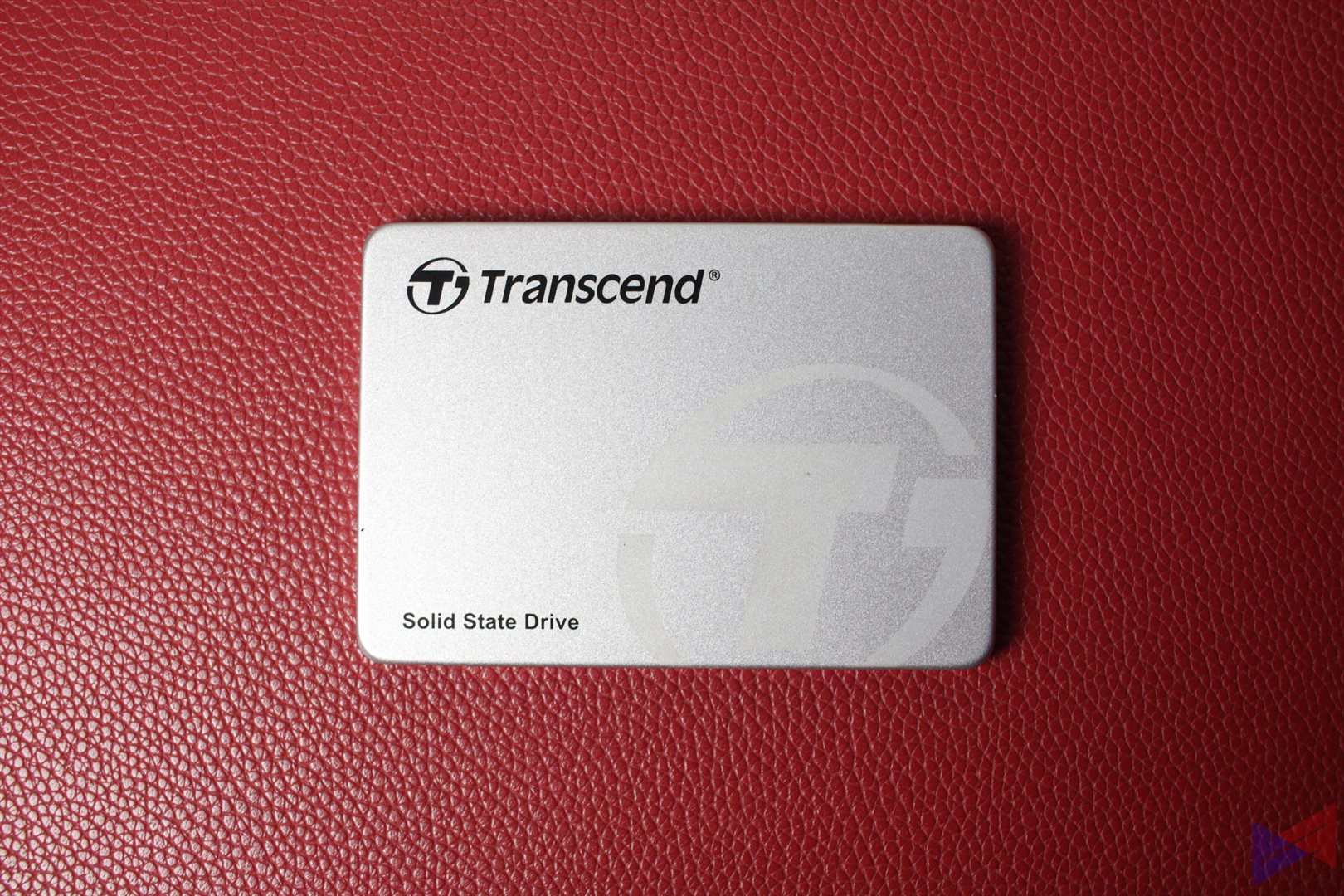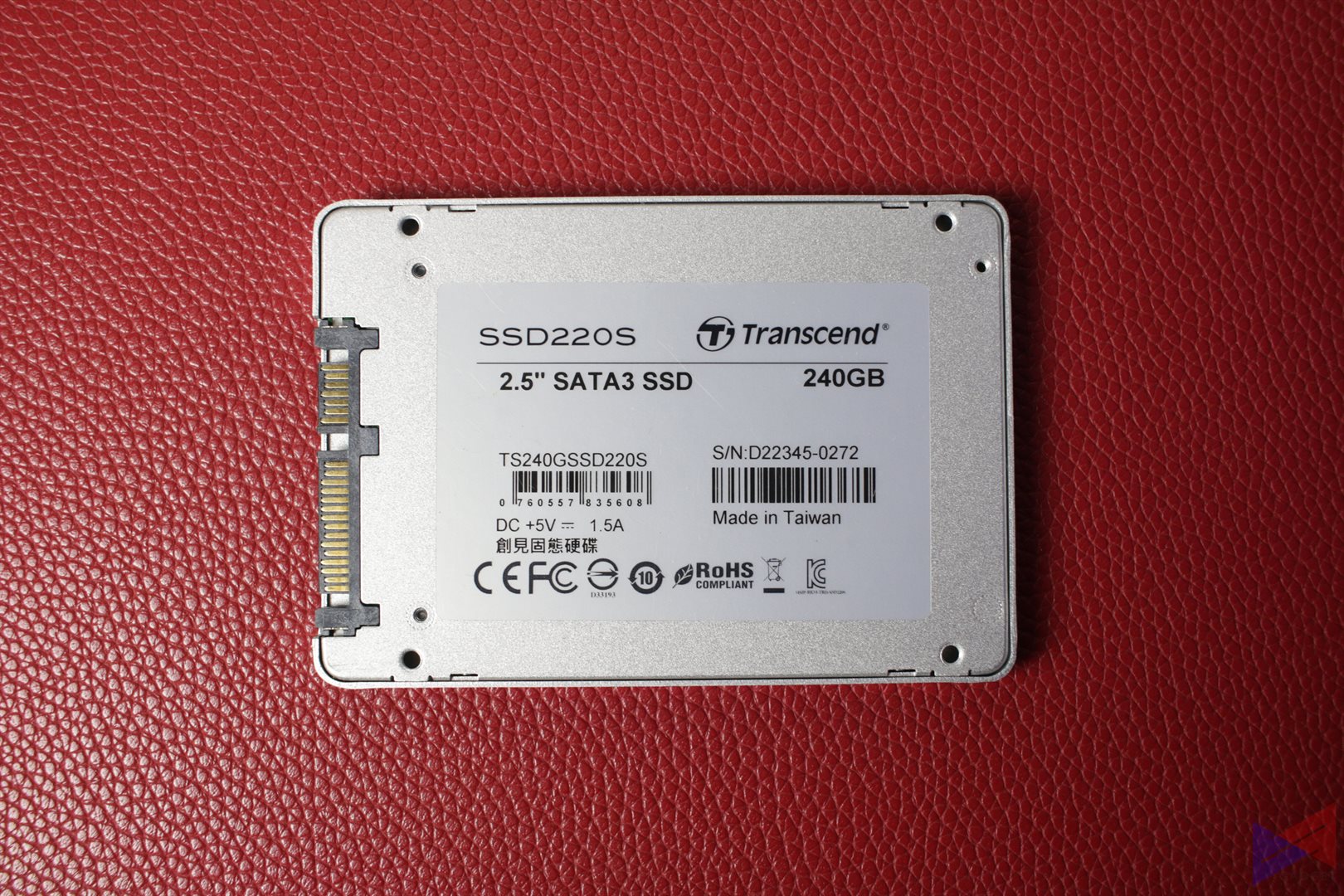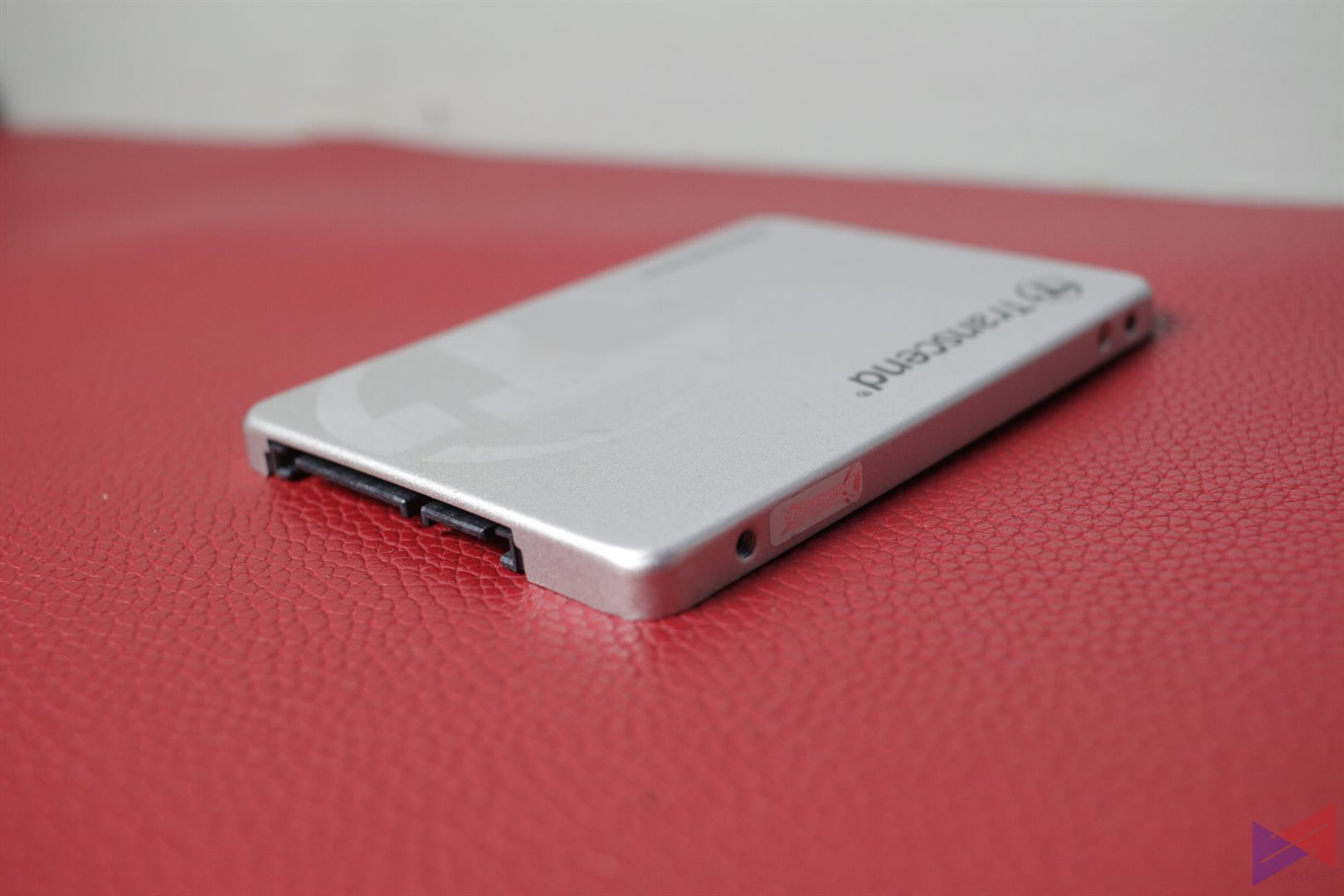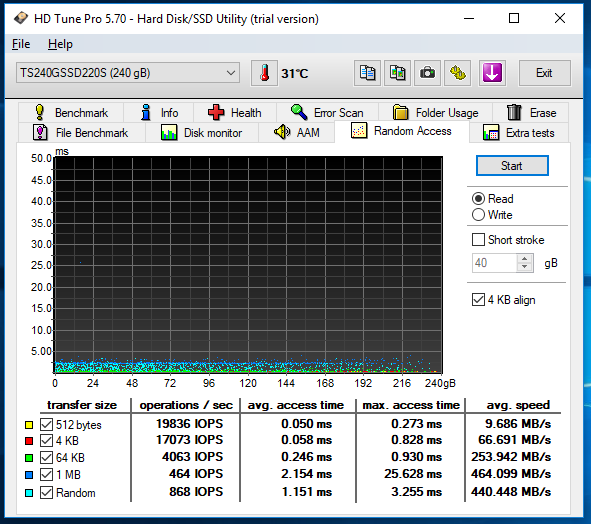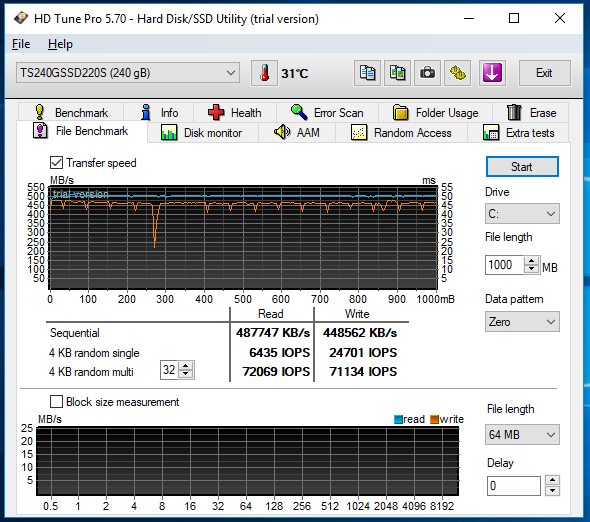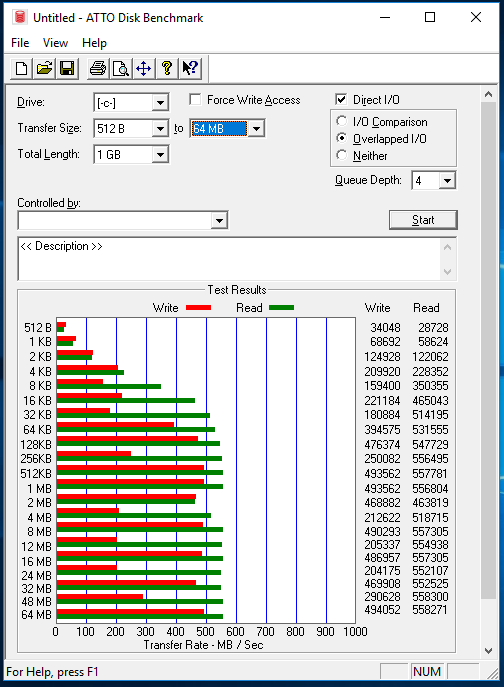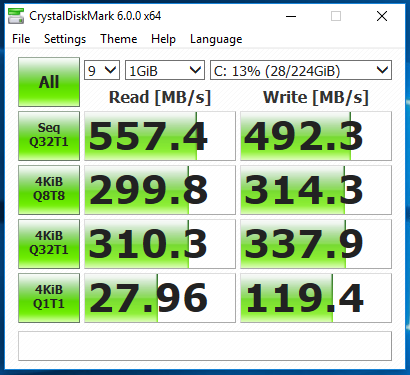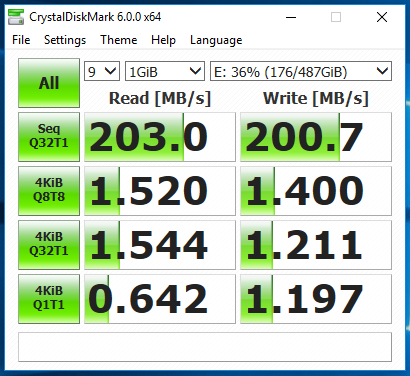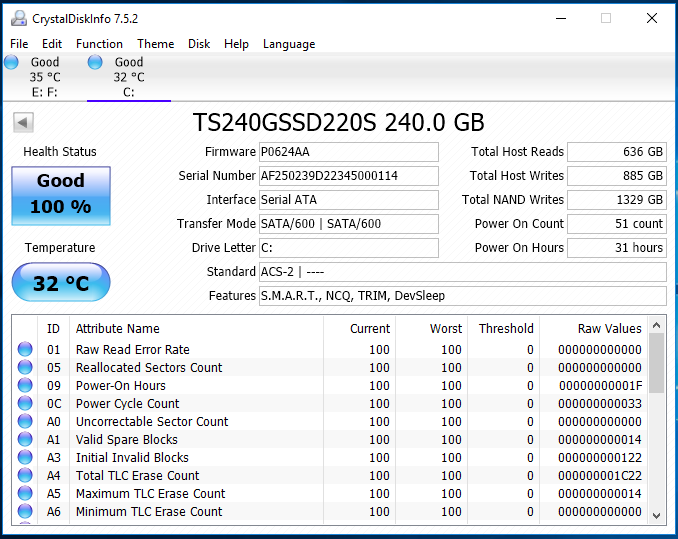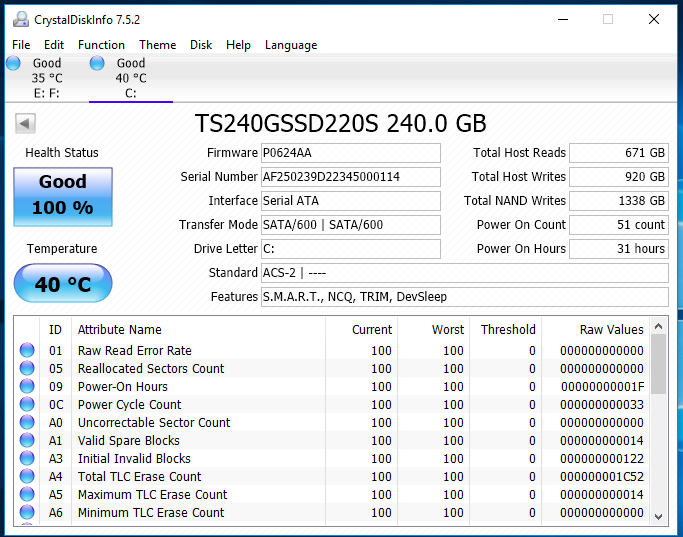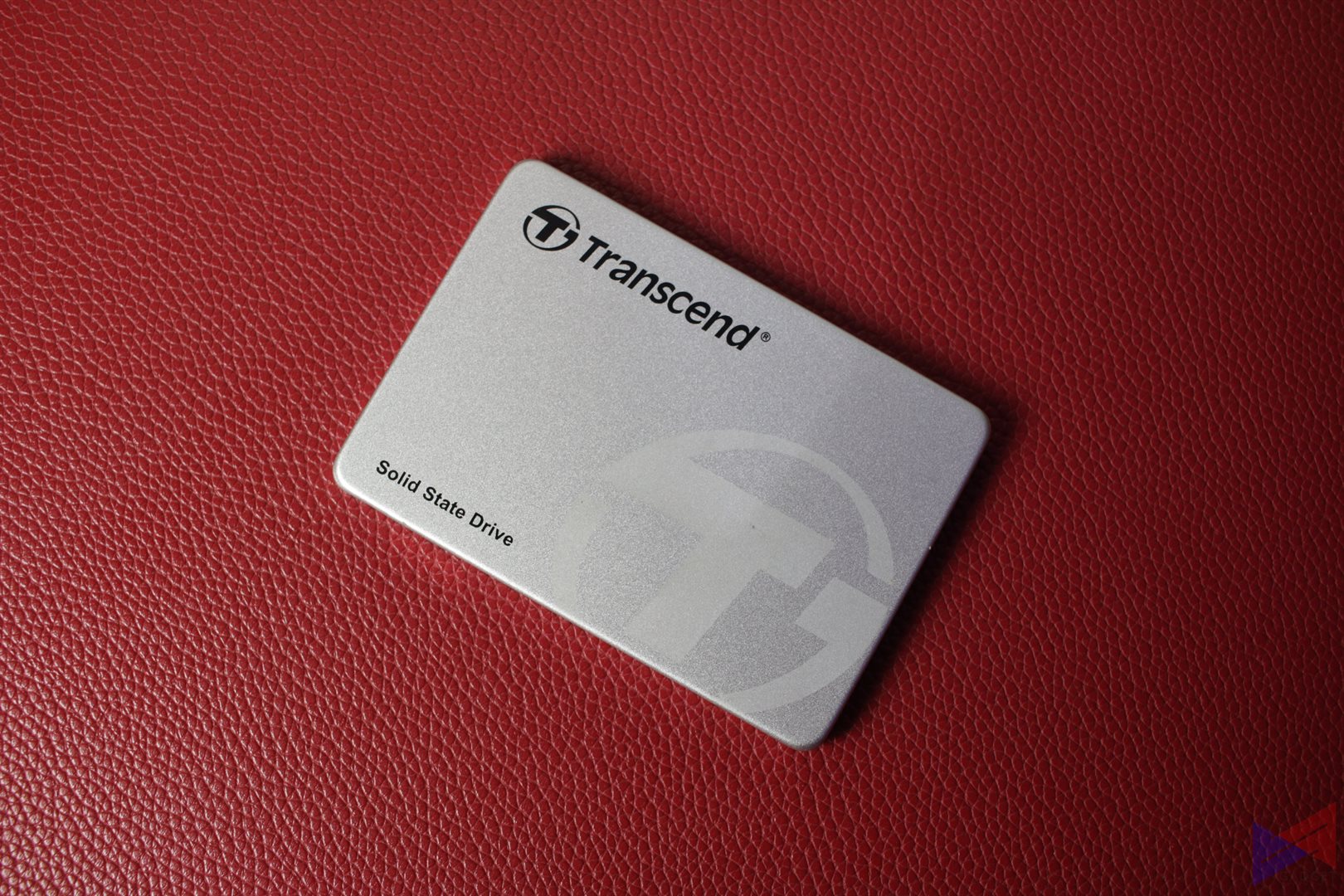In an era where a fast-paced lifestyle is common to the daily productivity person, every second matter wasted on trivial things, such as the time that a computer takes to boot up, could mean an email not sent just before a flight, or loss of audience, thanks to an article published when the moment has passed.
In this regard, Solid State Drives offer a faster storage solution, letting your computer bootup and ready for work in a matter of seconds after you turn it on. The Transcend SSD220S is a perfect example of such a device. Offering blazing fast read and write speeds combined with a small form factor that makes it a perfect fit even for those with small cases.
Packaging
There’s nothing really fancy about the packaging here. You get a simple box with all the information you’ll need, the SSD, and the usual documentation.
Design and Build Quality
Even when its shell is made from Aluminium, the SSD220S doesn’t have much weight to it. The design is as simple as you would expect.
You get a slab of metal with the Transcend logo up front, and the product information at the back. On the side, you get the usual Sata 6gb/s and power connectors.
The small 2.5″ form factor simply means that this device will fit even tight spaces in your case, and even in laptops.
Performance
Test System Specs:
- Intel Core i5-6500 @ 3.2GHz
- 16GB DDR4 2133MHz RAM
- ASUS Strix GTX 1060 6GB OC
- ASUS Strix H270F Motherboard
- Silverstone Strider ST60FP-S 600W
- Transcend SSD220S 240GB Solid State Drive
- Seagate 1TB HDD 7200RPM
- Windows 10 Pro 64-bit
In this series of tests, we’ll test the SSD220S’s read and write speeds in a number of circumstances with some benchmarking tools and also monitor its temperature on idle and load. As this may just seem like a bunch of numbers, let me give a brief explanation as to what each one does.
- HD Tune Pro – This tool on the other hand, also checks for the drive’s health, scans it for any errors, and measures its raw raw performance.
- ATTO Disk Benchmark – An industry-leading benchmark tool for SSD’s and HDD’s that measure performance using file file transfers of different sizes.
- CrystalDiskMark -This tool is used to measure the SSD’s sequential read and write speeds. That means how fast files can be read from and written to the drive, usually measured in MB/s.
HD Tune Pro
ATTO Disk Benchmark
CrystalDiskMark
Though it’s common knowledge that SSDs are faster than HDDs, here’s a side by side comparison for read and write speeds.
Temperatures
From the numbers, we can say that the SSD220S performs just as expected. It’s not the fastest out there, but it certainly does the job. Despite the small form factor, it’s also able to manage its temperature well.
Real Life Usage
Having the SSD installed in my machine, switch-on to Windows 10 takes around 10 seconds, compared to about 15 seconds on my HDD, sometimes even longer.
Do note that some games and applications may also benefit from an SSD, but not all. PLAYERUNKOWN’S BATTLEGROUNDS is a case in point, and loads noticeably faster when it’s installed in the SSD.
Verdict
The Transcend SSD220S is performs just as expected from a device of its class. Don’t let the simple design fool you. This thing is fast, as the numbers say, and is well-built. It’s also easy to install, and the small factor means that it can fit in the smallest spaces.
Personally, 240GB is enough for me, as i mainly use the SSD for fast bootup, and PUBG. The rest of my files are in the HDD. But should you need more space, there are always larger capacity models available, but do note that SSDs in general, entail a higher cost.
There are also M.2 SSDs available in the market, that are even faster and more space saving. They don’t come in cheap though. If your budget permits, and your board allows, by all means, go for those. But for those who can’t, the SSD220S is still a great option.
Good
- Decent build quality
- Compact form factor makes it ideal not only for desktops but also laptops
- Easy to install
- Performs as expected
- Fast boot up time
- Price
Not So Good
- 240GB may not be enough for some users
- There are M.2 SSD’s that are even faster and more compact
Emman has been writing technical and feature articles since 2010. Prior to this, he became one of the instructors at Asia Pacific College in 2008, and eventually landed a job as Business Analyst and Technical Writer at Integrated Open Source Solutions for almost 3 years.

